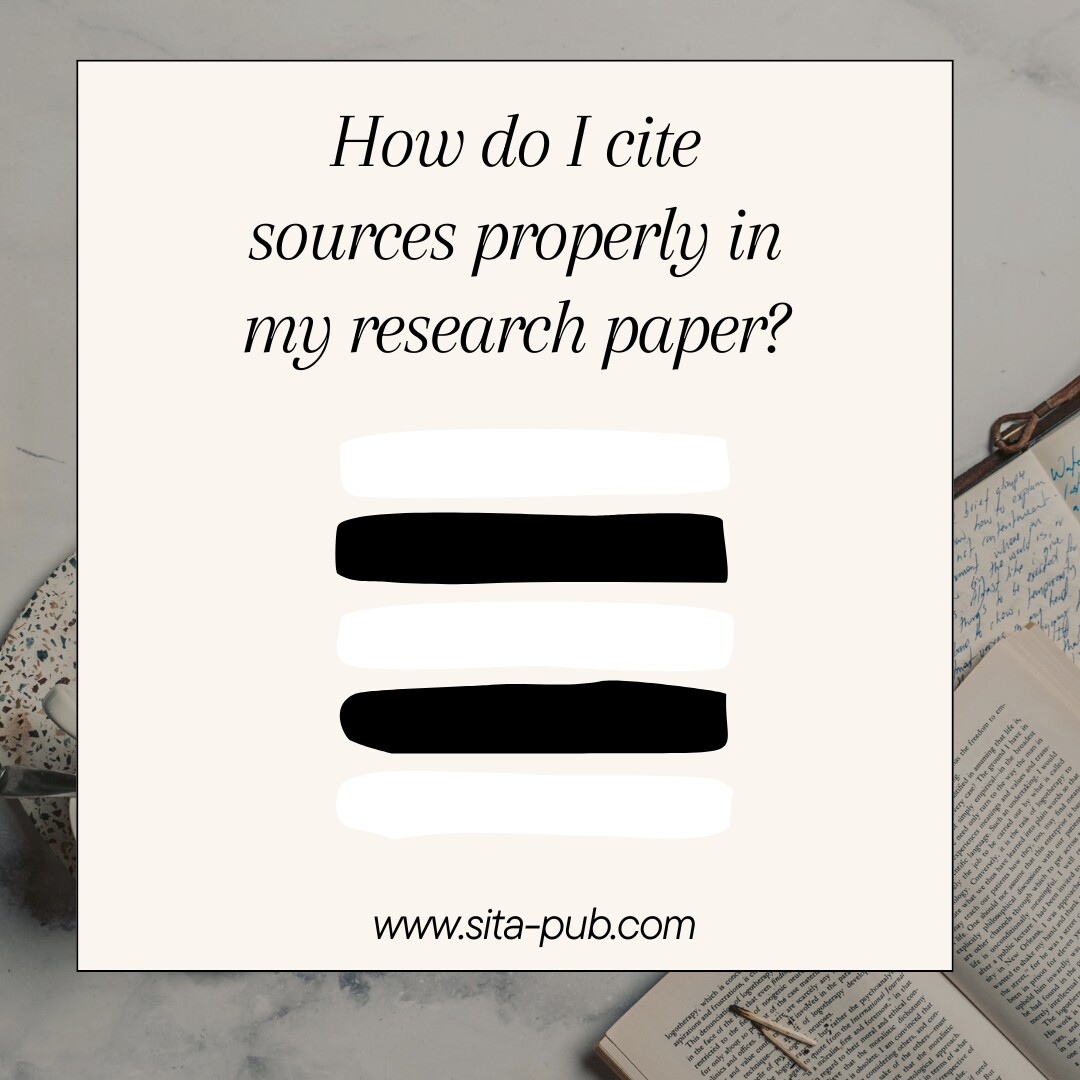How do I cite sources properly in my research paper?


Citing sources is crucial in academic writing. It gives credit to original authors and demonstrates that your research is credible. This guide will explain different citation styles, such as APA, MLA, and Chicago. We will also discuss the importance of a bibliography and how to avoid plagiarism, along with practical tips to enhance your citation skills.
Citations are references to the works used in your research. They provide readers with the information needed to locate the original sources. A proper citation typically includes:
Author(s): The individual or group who created the work.
Title: The name of the book, article, or webpage.
Publication year: When the source was published.
Publisher or journal name: The organization that published the work.
Page numbers: Important for referencing specific parts of a text.
DOI or URL: For online sources, this allows readers to access the material directly.
Using proper techniques is essential for supporting your ideas and allowing others to verify your claims.

A bibliography lists all the sources referenced in your work, usually found at the end of your document. It serves several important purposes:
Overview of Sources: Provides a complete list of materials consulted during your research.
Helping Further Research: Allows readers to look up sources for additional information.
Showing Scholarly Rigor: Reflects your commitment to thorough research and academic honesty.
Including a bibliography enhances your work's credibility and transparency.

Establishing Credibility: Proper references support your arguments with reliable information.
Preventing Plagiarism: Citing helps avoid using others' work without permission, which is vital for academic integrity.
Helping Research: References allow readers to track the origins of your ideas and verify claims.
Respecting Academic Tradition: Acknowledges contributions from other researchers, promoting respect for intellectual property.
References are not mere formalities; they are essential to the research process and academic discourse.

To find the appropriate style to use, follow these steps:
Check the Journal’s Website: Many journals have specific guidelines for authors, including preferred styles.
Consult Style Manuals: Official guides like APA, MLA, or Chicago offer detailed rules and examples.
Ask Your Teacher: If writing for a class, your instructor may specify which style to follow. Clarifying this early can save time.
Use Online Resources: Websites like Purdue OWL provide extensive information on different styles, including examples and formatting tips.
Understanding the specific requirements for your citations is crucial for ensuring accuracy.
Book: Smith, J. (2020). Understanding Research Methods. Academic Press.
Journal Article: Doe, J. (2019). The impact of social media on research dissemination. Journal of Social Media Studies, 15(3), 45-67. https://doi.org/10.1234/jsms.2019.15.3.45
Book: Smith, John. Understanding Research Methods. Academic Press, 2020.
Journal Article: Doe, Jane. "The Impact of Social Media on Research." Journal of Social Media Studies, vol. 15, no. 3, 2019, pp. 45-67.
Book: Smith, John. Understanding Research Methods. New York: Academic Press, 2020.
Journal Article: Doe, Jane. "The Impact of Social Media on Research." Journal of Social Media Studies 15, no. 3 (2019): 45-67. https://doi.org/10.1234/jsms.2019.15.3.45.
Each style has its own rules, so it’s important to choose one that fits your field and follow its guidelines.
Footnotes are notes placed at the bottom of a page, providing extra information, clarification, or references related to the text. They serve several purposes:
Supplementary Information: Add context or details that help the reader understand better.
Citations: Allow readers to find sources for specific information easily.
Clarifications: Explain complex ideas or terms needing further explanation.
Footnotes are common in styles like Chicago and can effectively manage additional information.

Know Your Style: Understand the specific guidelines of the style you are using.
Keep Detailed Records: Write down all necessary details about your sources to simplify the process.
Cite as You Write: Include references while drafting to avoid forgetting them later.
Limit Direct Quotes: Use paraphrasing when possible; reserve quotes for key ideas or exact wording.
Be Consistent: Maintain uniform formatting throughout your document.
Check for Accuracy: Double-check all entries for correctness before finalizing your paper.
Consult Style Guides: Refer to official guides for specific formatting rules to avoid mistakes.
Use Online Tools: Use citation management tools, but always verify the results for accuracy.
Properly crediting sources is vital for maintaining academic integrity and enhancing the credibility of your research. By understanding citations, bibliographies, and footnotes, along with employing effective techniques, you can improve your academic writing. Good practices not only reflect your commitment to scholarly work but also strengthen the academic community by promoting dialogue and respect for others' contributions.
Enhance your academic writing with our formatting services! SITA Academy specialized in APA, MLA, and Chicago styles to ensure your citations and documents are perfect. Let us handle the details so you can focus on your research.
If you have any questions, inquiries, or would like to learn more about our services, please don't hesitate to reach out to us. Our dedicated team is ready to assist you.